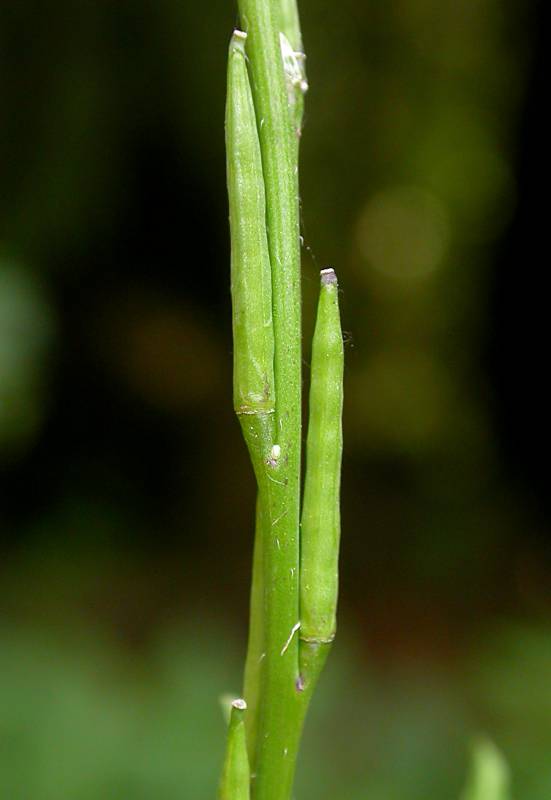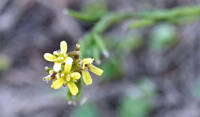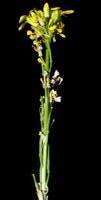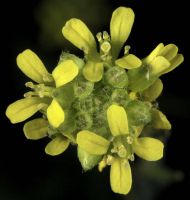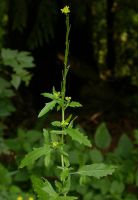Distribution: Occurring chiefly west of the Cascades crest in Washington; Alaska to California, east across most of North America to the Atlantic Coast.
Habitat: Waste ground and other disturbed areas at low elevations.
Flowers: March-September
Origin: Introduced from Europe
Growth Duration: Annual
Conservation Status: Not of concern
Pollination: Bees, flies
Annual herb, the stem simple or loosely-branched, 3-8 dm. tall, strongly pubescent with spreading, stiff, pungent hairs.
Basal leaves lyrate-pinnatifid, petiolate, up to 2 dm. long, the terminal lobe ovate, with shallow, rounded lobes; cauline leaves alternate, sessile, much reduced, pinnatifid with 4-6 linear to narrowly-lanceolate lobes, the terminal lobe deltoid-lanceolate.
Inflorescence of bractless racemes, often elongate to 3.5 dm. in fruit; pedicles erect, stout, 2-3 mm. long, enlarged at the tip to the thickness of the silique; sepals 4, oblong-oblanceolate, 2 mm. long; petals 4, pale yellow, 3-4 mm. long; stamens 6; style lacking, stigma 2-lobed.
Siliques erect, tightly appressed, 8-15 mm. long, terete, linear but tapering to a beak-like tip; valves 3-nerved; seeds in 1 series.
Publication: Fl. Carniol. ed. 2. 2: 26. 1772.
Sisymbrium officinale (L.) Scop. var. leiocarpum DC. [VPPNW2]
Sisymbrium officinale (L.) Scop. var. officinale [VPPNW2]
PNW Herbaria: Specimen records of Sisymbrium officinale in the Consortium of Pacific Northwest Herbaria database
WA Flora Checklist: Sisymbrium officinale checklist entry
OregonFlora: Sisymbrium officinale information
E-Flora BC: Sisymbrium officinale atlas page
CalPhotos: Sisymbrium officinale photos



